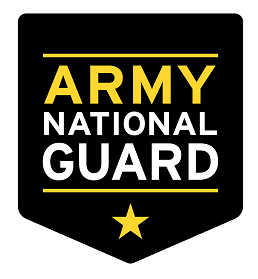
They say that a picture is worth a thousand words, and as a Geospatial Intelligence Imagery Analyst for the Army National Guard, those words protect the lives of U.S. personnel in the field.
National Guard Geospatial Intelligence Imagery Analysts examine and interpret imagery information about enemy forces and provide commanders with an accurate picture of the battlefield. This information is critical to planning for our Nation's defense. You'll earn a secret clearance and work with other intelligence professionals, gathering data and studying images required for tactical and operational plans. You'll analyze aerial and ground photographs, as well as electronic imagery of enemy ships, bases, missile sites, and industrial facilities, identifying enemy equipment, weapons and operational forces. Your geographical analysis of land and sea will be crucial to your Commander's ability to battle plan.
Job Duties
- Produce intelligence by analyzing images, fixed/moving targets, and geospatial data
- Identify military installations, facilities, weapon systems, military equipment, and defenses
- Distinguish changes to the battlefield based on imagery analysis
- Conduct Battle Damage Assessment
Some of the Skills You'll Learn
- Analyzing fixed/moving target indicators, geospatial data, and overhead/aerial images
- Planning overhead and aerial imagery collection
- Gathering information utilizing sophisticated mapping tools, as well as the premier digital and analytical intelligence networks to create products for the Commander
Helpful Skills
- Analytical thinking
- Ability to communicate; speaking and writing clearly
- Interest in reading maps and charts
More than any other branch of service, the Army National Guard offers a wide range of intelligence-related positions. Through your training, you will develop the skills and experience to enjoy a civilian career with engineering, mapmaking, mining, land evaluation, and construction companies.
Earn While You Learn
Instead of paying to learn these skills, get paid to train. In the Army National Guard, you will learn these valuable job skills while earning a regular paycheck and qualifying for tuition assistance and certifications.
Job training to be a Geospatial Intelligence Imagery Analyst requires 10 weeks of Basic Training, where you'll learn basic Soldiering skills, and 22 weeks of Advanced Individual Training (AIT) and on-the-job instruction, including practice in intelligence gathering. You'll learn Geospatial Intelligence in the classroom and in the field. Completion of your initial entry training in the Army National Guard could also lead to additional college credit.
Benefits/Requirements
Benefits
- Paid training
- A monthly paycheck
- Earn a security clearance
- Montgomery GI Bill
- Federal and State tuition assistance
- Retirement benefits for part-time service
- Low-cost life insurance (up to $400,000 in coverage)
- 401(k)-type savings plan
- Student Loan Repayment Program (up to $50,000, for existing loans)
- Health care benefits available
- VA home loans
- Bonuses, if applicable
Most non-prior service candidates will initially earn between $200 and $250 per drill weekend, subject to change.
Requirements
- Military enlistment in the Army National Guard
- Must be at least a junior in high school, or have a high school diploma or a GED certificate
- Must be between the ages of 17 and 35
- Must be able to pass a physical exam and meet legal and moral standards
- Must meet citizenship requirements (see NATIONALGUARD.com for details)
Requires military enlistment. Programs and benefits are subject to change. Ask your Army National Guard recruiter for the most up-to-date information. Actual MOS assignment may depend on MOS availability.
Other Job Information
Job ID: 2618
ZIP Code: 46216
Job Category: Intelligence
Age Requirements: Must be between the ages of 17 and 35 Geospatial fusion
